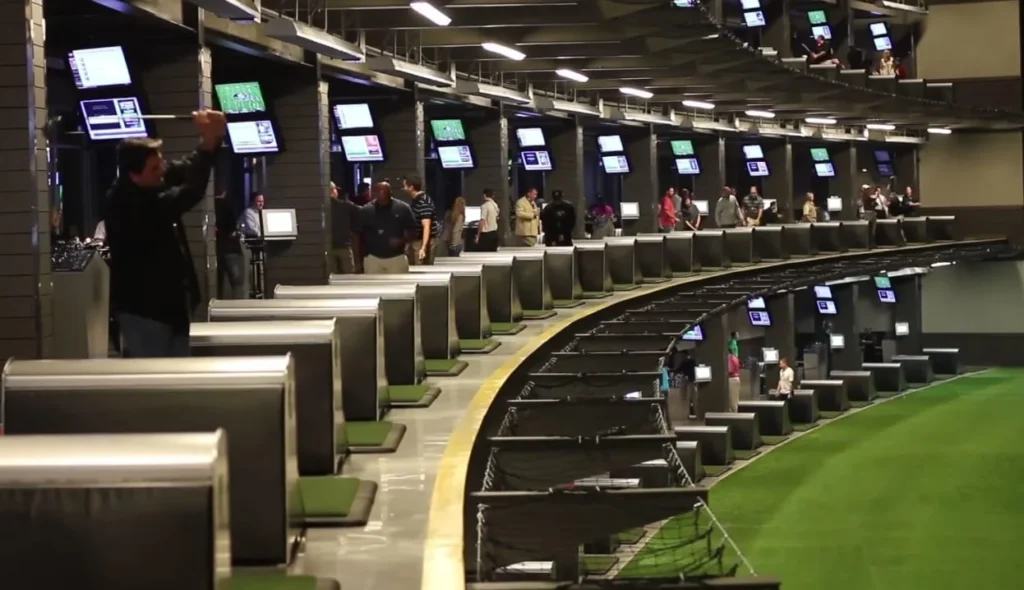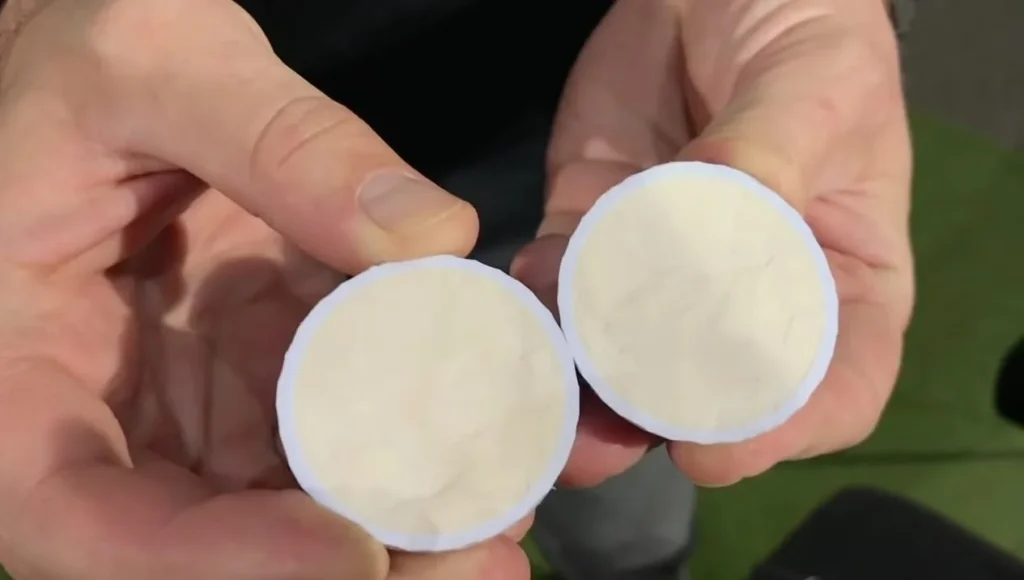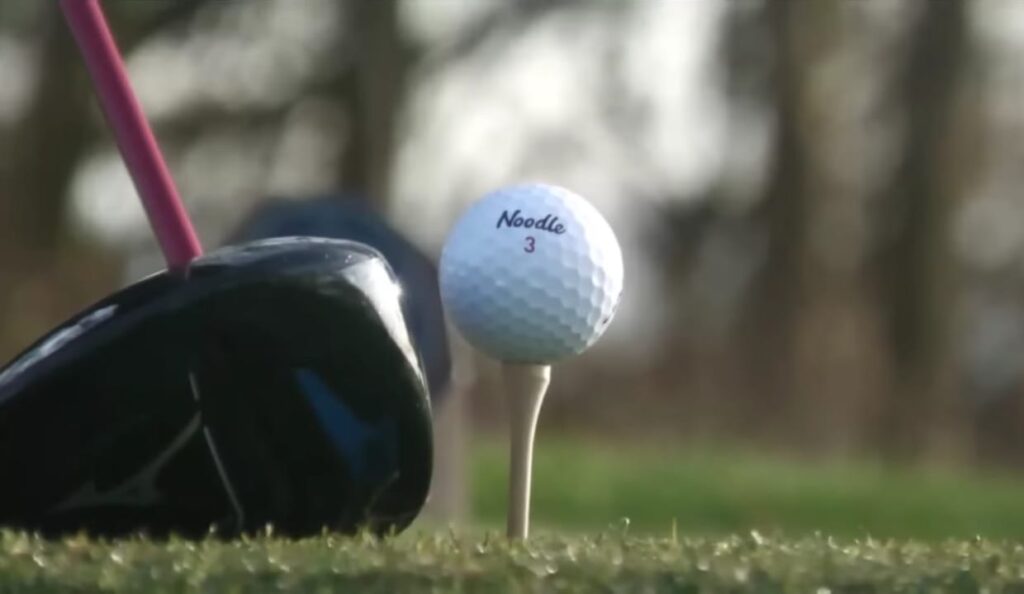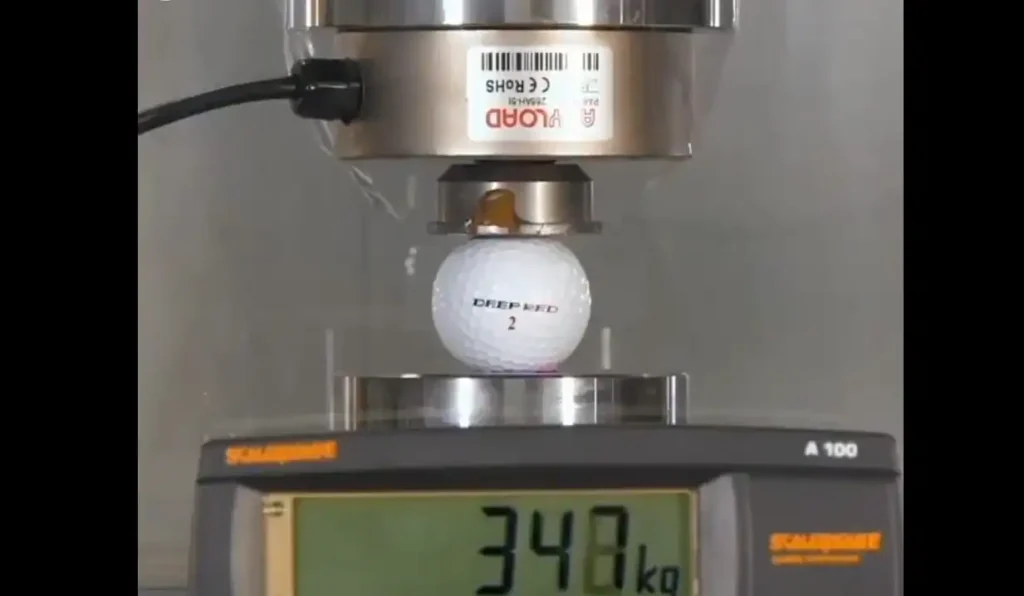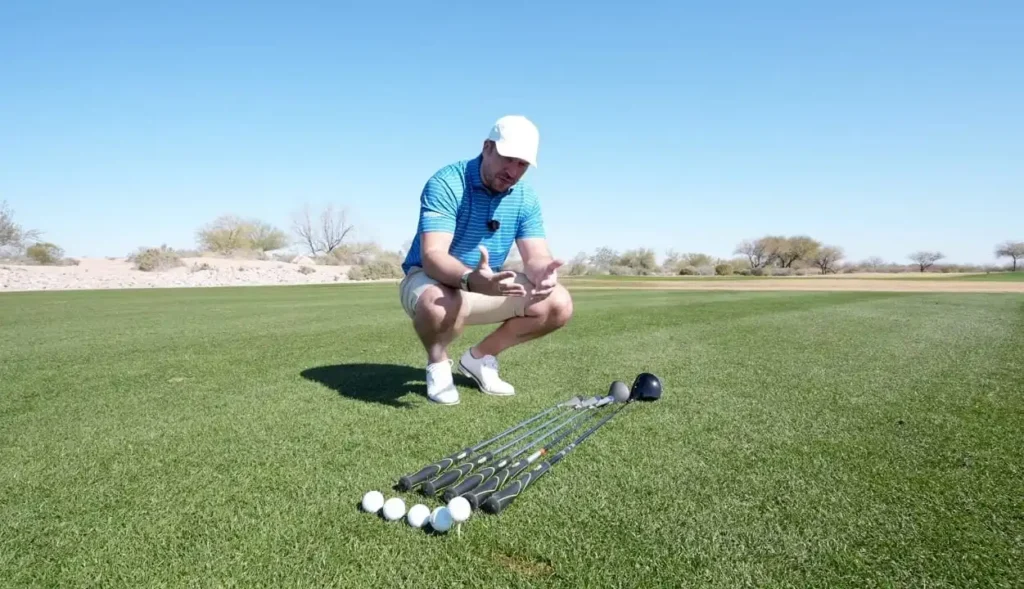We’ve repeatedly talked about how lost golf balls are a major pain in every golfer’s ass. Losing a ball in golf isn’t easy; it can set you back a few dozen bucks and sometimes force you to part ways with your favorite dimpled sphere. That’s why golf ball tracking is a thing now in which a player uses different ways to recover a lost orb or prevent losing it in the first place. For instance, you can use trackers to avoid losing a ball. After all, 300 million golf balls are lost in the United States alone. But it’s time we undo this tragedy and keep our favorite spheres under our watchful gaze. So, this article will discuss ball tracking and explore a few ways to avoid losing a ball.

The Evolution of Golf Ball Tracking
Ball tracking in golf dates back to 1998 when Swedish entrepreneur Daniel Forsgren first conceptualized Protracer as an innovative solution to monitor a dimpled sphere’s flight. Protracer would go on to revolutionize not only how television viewers experienced golf but also how players and coaches evaluated swings and ball statistics. That’s how we have the modern golf ball tracker today, successfully preventing golfers from losing a ball in golf.
Topgolf acquired Protracer in 2016, renaming it Toptracer and ushering in an era of enhanced features and capabilities. Complementary Metal-Oxide Semiconductor (CMOS) sensors proved transformative allowing three-dimensional representation of space with real-time tracking of golf balls. That’s how golf ball tracking has turned into an art form with the passage of time. So, let’s discuss some more information on tracking golf balls and recovering the lost ones.
The Role of Toptracer: Turning Sensors into Spectacle
Toptracer’s core technology relies on CMOS sensors similar to those found in modern DSLR cameras. These sensors create a dynamic 3D space that captures the movement of the golf ball as it traverses the course. Stationary cameras positioned behind the golfer monitor ball flight while real-time processing of data collected by the computer completes its processing in real-time. That’s how golf ball tracking is done and players can keep their favorite spheres in their possession.
The computer’s ability to identify balls within images allows it to produce live tracking images depicting its flight path with features like clubhead speed, launch angle, and ball spin. Then all these images are broadcast to millions of viewers worldwide screens. Losing a ball in golf isn’t ideal, especially when you are a golf fan watching the PGA Tour from the comforts of your home. You want to see where the ball lands after seemingly getting lost in the heavens. So, Toptracer’s golf ball tracker technology helps you in this regard. Some other methods that help in tracking golf balls include:
1. Visual Observation
Golfers rely heavily on visual observation in tracking the trajectory and flight of their ball, using factors like height, direction, and trajectory analysis. These key tools assist them in pinpointing their final landing spot. That’s how you can do golf ball tracking right.
2. The Buddy System
Employing a playing partner as an observer to keep tabs on the ball’s descent can be an invaluable asset in pinpointing its landing area more precisely. Teamwork also increases your odds of getting it just right. So, losing a ball in golf is yesterday’s news.
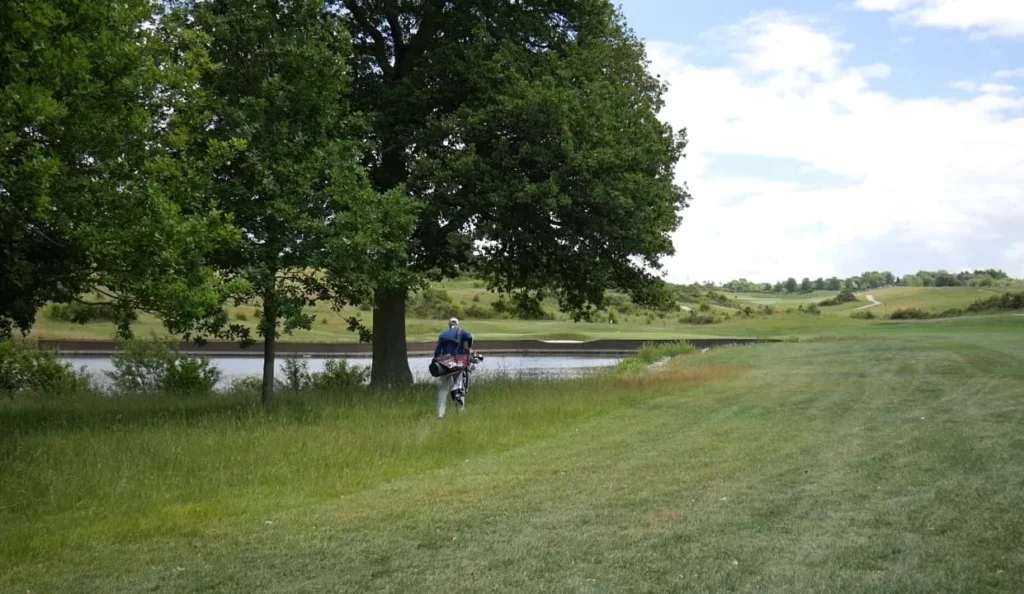
Tips for Finding Your Golf Ball
A golf ball tracker is the best way to avoid losing your balls during a game. Some wealthy guys invest in trackable golf balls, but that’s out of our league. Golf ball tracking isn’t that difficult. You just have to know the right ways to never lose your dimpled sphere. So, this portion of the article will discuss some acute ways of finding your golf ball. Losing a ball in golf is bad. Let’s not have it happen again, am I right?
Continuous Observation
Always remain aware of where your ball lands by keeping an eye on it throughout its trajectory until landing, which significantly helps with ball retrieval success. Try a realistic assessment in which you accurately estimate your shot’s distance traveled. That’s how you can save time and help narrow the search area down more effectively.
Mark Your Ball
After watching where your ball lands, mark it by choosing an object such as a mound, tree, or bunker as an indicator to facilitate retrieval. Golf ball tracking can be pretty time-consuming and exhausting. So, employ the services of playing partners to assist in pinpointing where your ball lands. An outside perspective could prove invaluable in finding it.
Color Matters: Enhancing Visibility
The visibility of golf balls in flight depends upon factors like lighting conditions and the color of their ball. On sunny days, lighter colors such as white or yellow stand out more visibly. However, during lower light, darker hues like red and orange become more evident. This interplay of colors adds another level of discernment for golfers who aim to track its flight path accurately.
Focus Techniques During the Swing
There are various schools of thought when it comes to how and where one should focus during a swing for a straight shot. From looking directly at the ball itself to paying more attention to specific dimples on its surface or even just the back inside quarter; individual preferences differ when making this choice. That’s how you can track your golf balls successfully.
The Golfer’s Toolkit for Golf Ball Tracking
Yardage Books
Attuned golfers often keep meticulous yardage books handy as a go-to resource, featuring maps that describe elevation changes, hazards, and green slopes on every hole they play on. By consulting these books for strategic insights into where their ball may land based on these specific details of each hole. Tracking golf balls will be child’s play with this tip.
Caddy’s Wisdom
Every great golfer requires the guidance and assistance of an expert caddy, providing insight into course dynamics as well as recommendations regarding optimal landing areas and club selection. A knowledgeable caddy’s advice can prove invaluable in honing one’s golf game to become top-tier. That’s why caddy’s wisdom is important in golf ball tracking.

Factors Influencing Golf Ball Landing
Wind Direction
Wind can play an influential role in shaping the trajectory of a golf ball shot, so golfers pay careful attention to its speed and direction to adjust their shots so the ball lands where intended. Losing a ball in golf is difficult if you’re following this suggestion very faithfully.
Slope Gradient
Topography on a golf course, particularly its slopes, plays an essential part in controlling where and how a ball lands. Golfers can use slope gradients as predictors for the ball’s path toward its target. So, improve your golf ball tracking prowess with this simple suggestion.
Ground Hardness
The hardness of the ground impacts how balls bounce and roll when hitting their target areas. In other words, golfers need to modify their strategy based on whether soft or firm ground prevails at each landing site. The hardness of the ground is vital to track your golf balls.
The Future of Golf Viewing
As golf ball tracking technology develops, its future promises richer experiences for viewers. Virtual 3D environments give viewers unprecedented angles and insights that could become available over time, coupled with radar technology, cameras, and the evolving demands of golf enthusiasts worldwide keeping viewers spellbound by tracking golf balls on TV.
Conclusion
So, what did we learn about golf ball tracking in this Golfing Gimmicks article? Mastering the art of tracking a golf ball’s flight is an essential skill for any golfer. From traditional visual methods to cutting-edge technology, developing these techniques in your game will not only increase your ability to locate it more precisely and deepen your connection to golf but also foster new ways of enjoying this beloved sport. So, follow the tips we’ve mentioned above to the core. That’s how you can prevent losing a ball in golf and keep these dimpled spheres close to your heart.
Read this article on the environmental effects of losing a golf ball to better understand why your shiny orbs shouldn’t be lost in the ocean or dumped in a landfill. Collect your golf balls after they are out of sight; make sure you don’t leave them underwater to become fodder for marine life.
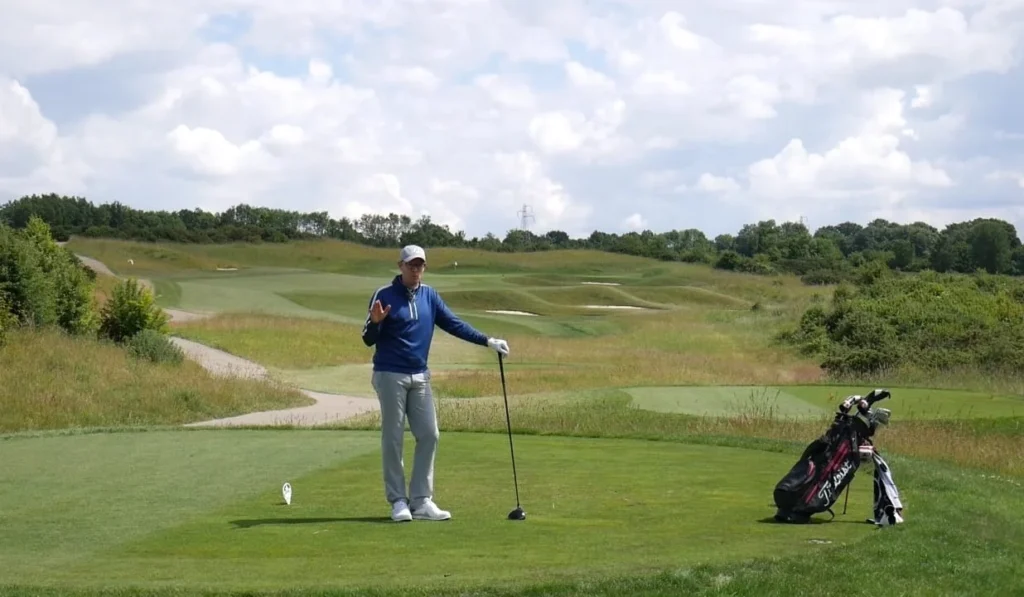
FAQs on Golf Ball Tracking
1. Why can’t I see my golf ball in the air?
Finding a golf ball midflight can be a difficult challenge for many golfers. Multiple factors contribute to this difficulty, including its small size and rapid speed as it travels across a vast skyscape. Also, lighting conditions and color play an integral role; lighter colors like white or yellow balls tend to stand out more on sunny days. That’s why tracking golf balls is difficult.
2. How to track a golf ball in flight?
Tracking a golf ball through flight requires both an acute eye and knowledge of visual cues. Many golfers employ one or more of the following strategies for tracking ball flight:
Concentrating on the Back of the Ball during Swing: To maximize straight shots, some suggest concentrating on focusing on the back of the ball during the swing.
Focusing on Dimples or Spots: Paying close attention to specific dimples or spots on a ball’s dimpled or smooth back inside quarter can assist with tracking its trajectory. Practice Balls With Visual Aids: Practice balls that feature lines or bars can assist players in watching their spin while improving visibility and increasing awareness.
3. How Do Golfers Find Their Balls?
Locating your golf ball on a course can be an art in itself. Golfers use various strategies, such as:
Follow the ball’s flight
Monitoring where it lands allows golfers to pinpoint its landing site with landmarks close by.
Avoid the tunnel vision
Find your ball quickly. You gotta relax, scan the area from different angles, and move slowly across it.
Engage playing partners
Engage playing partners as they can assist with tracking its descent and verifying its landing spot.
Opting for sunglasses
Selecting golf-specific sunglasses enhances visibility, helping golfers keep tabs on their ball while in flight and read greens more effectively.
Use trackable golf balls
If you can spend $50 per sleeve then buy a “smart” golf ball and avoid losing it every time you are out there playing.
4. How do they track golf balls?
Technological innovations have provided advanced methods of tracking golf balls. For instance, the Doppler Radar Technology for tracking golf balls. Devices like Trackman and FlightScope use Doppler Radar technology to the flights of dimpled spheres in real time; so, it captures data such as speed, launch angle, and spin rate for real-time tracking of each flight path.
5. How do they track a golf ball on TV?
Television broadcasts bring the excitement and drama of golf right into viewers’ living rooms, featuring real-time ball tracking via Toptracer technology in special cameras equipped with CMOS sensors that record data about ball movement before turning this information into graphics for display on television screens.
6. How does a golf ball tracker work?
Golf ball tracking requires sophisticated technologies like Toptracer. CMOS sensors create a three-dimensional space in which Toptracer tracks each movement of a golf ball, giving real-time data regarding the position, spin, and trajectory of playbacks. That’s how you can avoid losing a ball in golf.
7. How to spot where’s my golf ball?
Reducing golfer frustration involves using visual observations, partner assistance, and marking the location of each golf ball for easy retrieval on the course. So, with this knowledge in hand, golfers can use strategic golf course navigation techniques. You gotta use trackable golf balls if you can and that’s how you’ll know exactly where your golf ball is at all times.
8. How can golf players see the ball?
Golf players can improve their ability to see the ball by considering several key factors, such as selecting the right ball color and wearing golf-specific sunglasses. That’s because sunglasses designed specifically for golf can improve clarity and help track the ball better, helping ensure better tracking performance and tracking the golf club.
9. How do you know what position your golf ball is?
Ascertaining the location of a golf ball requires keeping an eye on its flight and landing as well as using course markers. Also, try consulting partners or caddies to help monitor its particular whereabouts. That’s how you can do golf ball tracking right while preventing losing a ball in golf with ease. Use a golf ball tracker, for Pete’s sake!
10. How do they track the trajectory of a golf ball?
The Doppler Radar technology precisely tracks the trajectory of golf balls, providing real-time insights into launch angles, spin rates, and ball speed. Golf’s fascinating combination of skill and science remains captivating to both participants and observers. The search to understand and optimize ball flight unites tradition with cutting-edge technologies to enrich this timeless narrative game.





